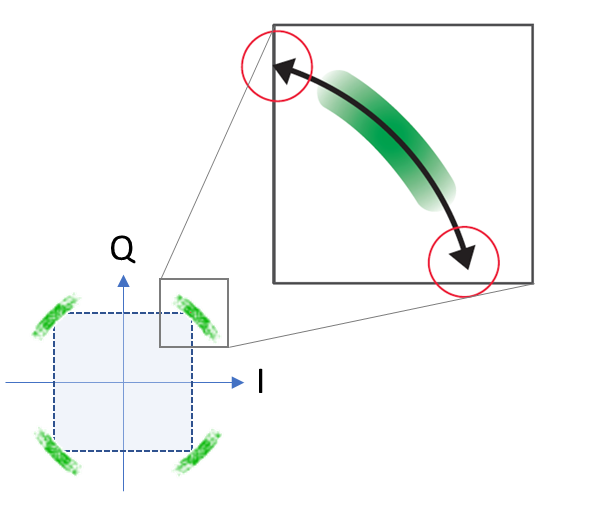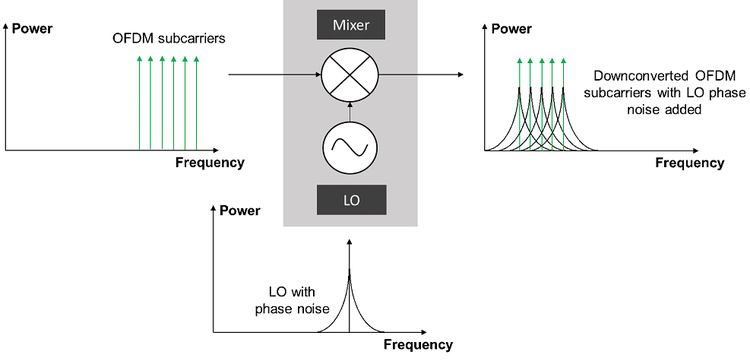
How to Optimize Local Oscillator Phase Noise for EVM Measurements
The local oscillator (LO) is a major building block of every radio frequency (RF) front-end. LO is responsible, with the mixer, for the up and down-conversion of a specific channel. In a signal analyzer, the phase noise of an LO impacts the analyzer’s dynamic range and measurement accuracy.
Understand the Effects of Phase Noise for Demodulation Analysis
Phase noise describes the frequency stability of an LO. It is the noise spectrum around the oscillator’s signal in the frequency domain. Phase noise can cause errors in the phase component of an error vector. The phase noise performance of a signal analyzer contributes error to error vector magnitude (EVM) measurements, especially for dense constellations and narrow subcarrier spacing signals.
Dense constellations
The phase noise of the signal analyzer’s LO signal is translated into the input of the signal analyzer’s mixer. The direct effect of phase noise on the IQ constellation diagram is the radial smearing of the symbols, as shown in Figure 1. For a higher-order modulation scheme (for example, 256QAM), the symbols are closer and the requirement of EVM performance is higher. Ensure that the signal analyzer’s phase noise performance will not impact the EVM measurement results.

Narrow channel spacing
Orthogonal frequency-division multiplexing (OFDM) is a common modulation scheme for wideband digital communication. It uses many closely spaced orthogonal subcarrier signals, each with its own modulation scheme, to transmit data in parallel. During frequency conversion with a poor phase noise LO, the subcarrier with phase noise spreads into other subcarriers as interference, as shown in Figure 2. The phase noise degrades the demodulation analysis of the OFDM signal.

Optimize Phase Noise for Your Test Applications
Signal analyzers offer a choice for phase noise optimization. For example, the new Keysight N9021B MXA signal analyzer offers these operating conditions: best close-in phase noise, best wide-offset phase noise, and fast tuning. The optimization provides a different phase noise profile for various test applications:
- “Best Close-In” phase noise optimizes phase noise for small frequency offsets from the carrier at the expense of phase noise far away.
- “Best Wide-Offset” phase noise optimizes phase noise for wide frequency offsets from the carrier.
- “Fast Tuning” switches from a two-loop local oscillator to a single loop for fast tuning measurements.
To obtain the optimum phase noise performance of a signal analyzer for modulation analysis, consider not only the phase noise profile (close in and wide offset) of the signal analyzer but also the operation frequency, bandwidth, and subcarrier spacing (OFDM signal) of the input signal. Figure 3 shows the MXA phase noise setting for 5G New Radio demodulation analysis. The measurement application defaults to a wide offset for better modulation analysis.

Knowing the capabilities and performance of your signal analyzers is the first step toward making accurate and repeatable measurements. Keysight X-series signal analyzers offer flexible and optimized settings to accurately evaluate RF components and devices and to achieve the best EVM measurement results.
See related posts to learn about how to optimize signal demodulation analysis: